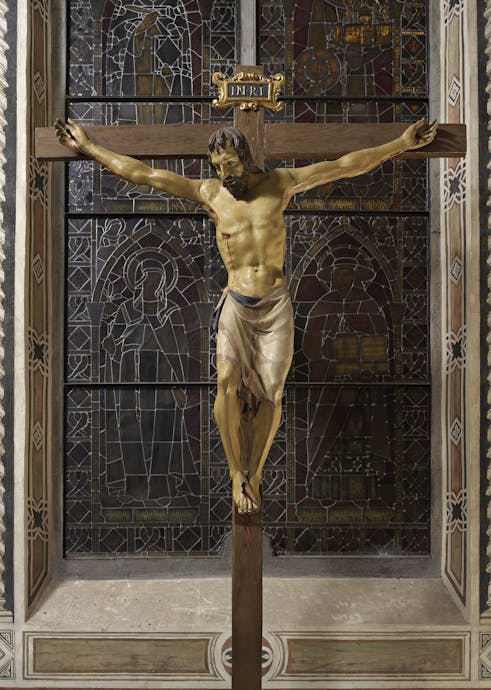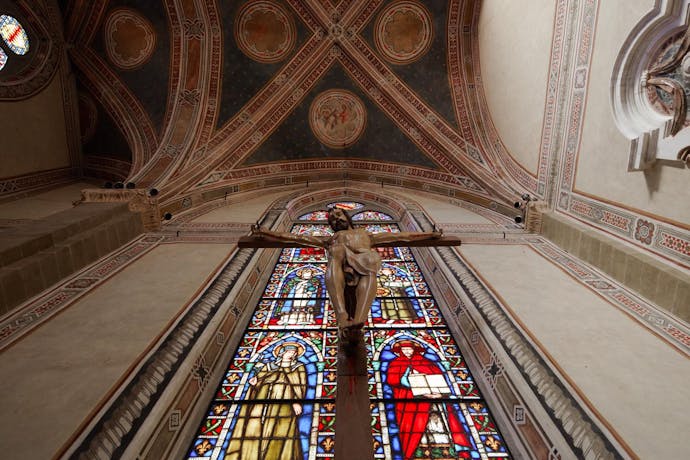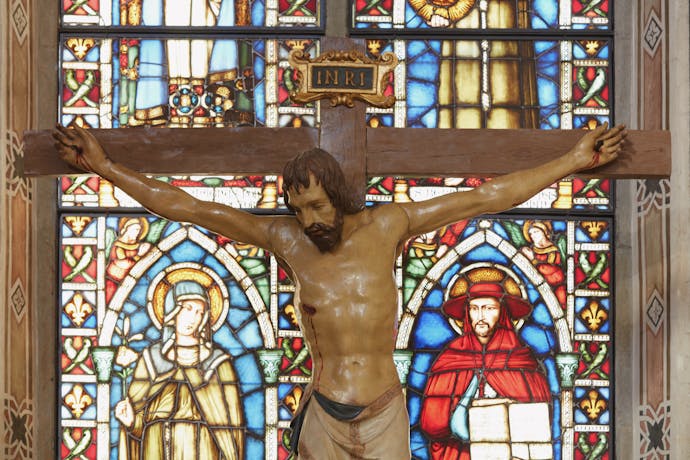Donatello
Artist: Donatello (Donato di Niccolò di Betto Bardi; Florence 1386-1466)
Title: Crucifix
Date: c. 1408-1409
Material and technique: carved and gilded pearwood
Dimensions: 168 x 173 cm (arm span)
Position: Basilica of Santa Croce, north transept, Bardi di Vernio Chapel
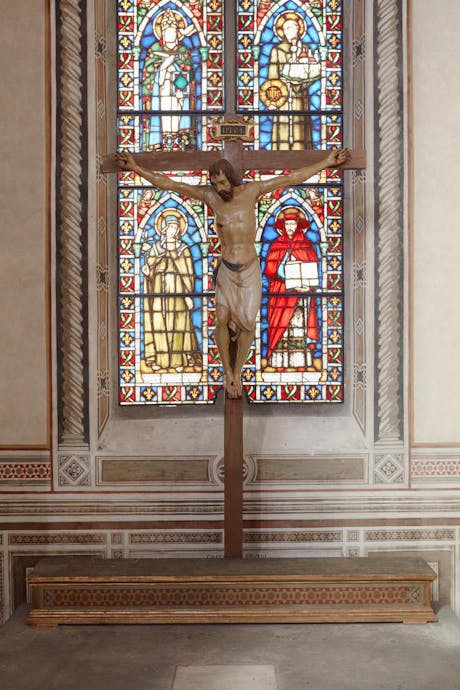
Donatello, Crucifix, c. 1408-9. Basilica of Santa Croce, north transept, Bardi di Vernio Chapel
NOTE: Donatello's Crucifix is not part of the visit itinerary as it is located in the area dedicated to worship, which is accessible for those who wish to gather in prayer. It is visible on special occasions.
It is not known where this Crucifix originally hung. It is first mentioned by Francesco Albertini in 1510 in a chapel in the north aisle close to the rood screen, possibly the Baroncelli Chapel dedicated to the Blessed Gherardo of Villamagna, though this interpretation is not universally accepted. After the rood screen and chapels were removed to bring the church into line with the precepts of the Council of Trent, the Crucifix was moved to the altar in the chapel at the end of the north transept, where Vasari saw it in 1571.
The Crucifix (including the loincloth) is carved from a single piece of solid wood, apart from certain parts and the arms which had to be articulated so that they could be moved during Holy Week ceremonies. The Crucifix was most recently restored in 1970 and in 2003–5.
It is considered almost universally to be the sculpture Vasari discusses in his Life of Donato (1550 and 1568). After Donatello had put a great deal of effort into carving a Crucifix, he sought the opinion of his friend Brunelleschi who gave him short shrift: "It appeared to him that Donato had placed a ploughman on the Cross, and not a body like that of Jesus Christ, which was most delicate in all its parts". Piqued, Donatello challenged Brunelleschi to do better. When Brunelleschi showed Donatello his Crucifix after months of hard work, Donatello so marvelled at its perfection that he dropped the "eggs, cheese and fruit" in his apron and admitted: "it is thy work to make Christ and mine to make ploughmen". Donatello focuses here on the figure's humanity with its realistic features and on the drama of the moment, while Brunelleschi, in his Christ now in Santa Maria Novella (c. 1410), offers us the ideal nude, a study in the law of proportion.
Donatello's Crucifix is considered a youthful work, dated 1408–9 on grounds of stylistic similarity with a relief of Christ the Man of Sorrows carved for Florence Cathedral's Porta della Mandorla and now in the Museo dell’Opera del Duomo.
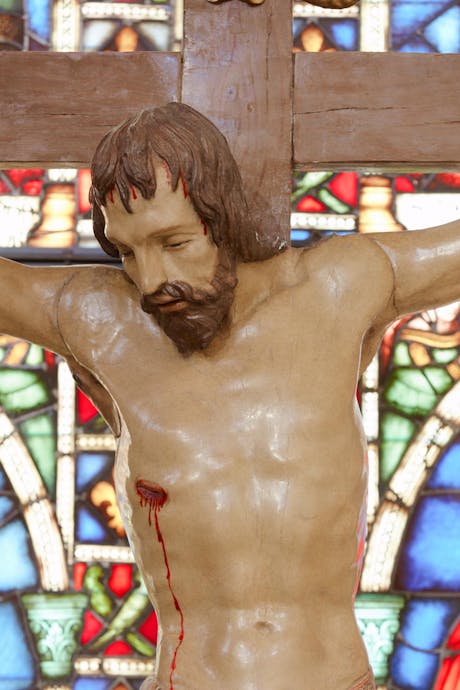
Donatello, Crucifix, detail, c. 1408-9. Basilica of Santa Croce, north transept, Bardi di Vernio Chapel
